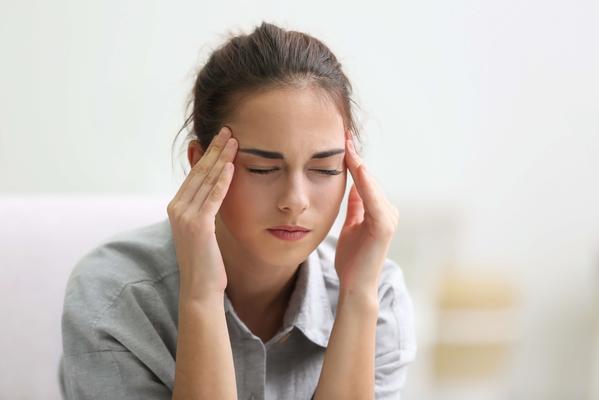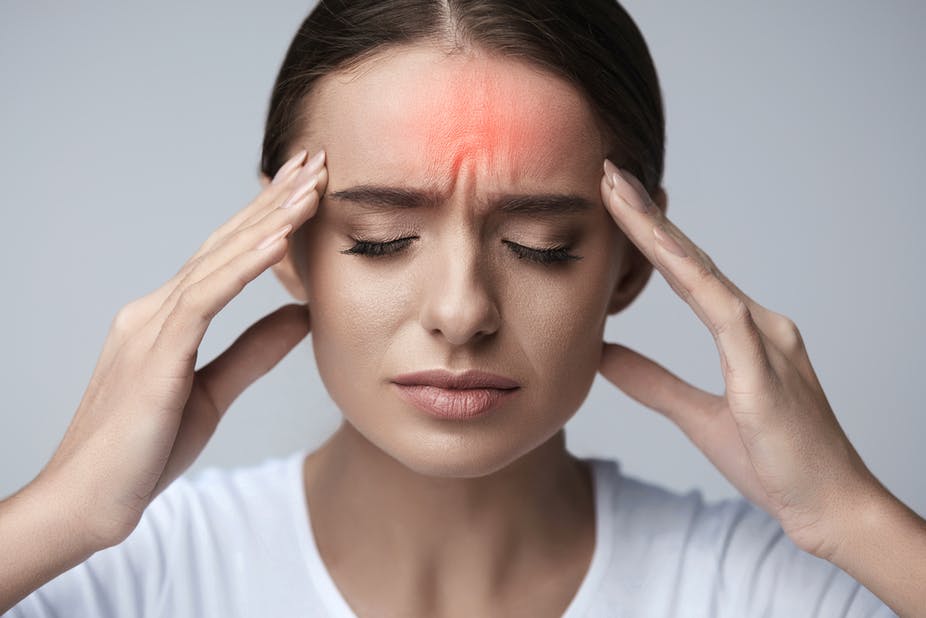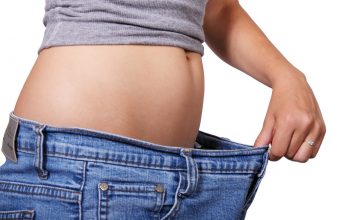Headaches complicate daily life for 60% of Germans. If you do not want to take medication for acute complaints, you can often use fluids and exercise.
Headaches affect almost everyone at some point. According to the German Migraine and Headache Society, 90 percent of all Germans experience headaches before the age of 12. And the trend is growing: According to Barmer’s medical report, the number of headaches diagnosed increased by 12 percent between 2005 and 2015. daily life, unhealthy diet and constant sitting in the office do not prevent headaches. Pain relievers can relieve pain, but not permanently.
Find out in this article what causes unpleasant headaches and how to deal with them naturally. Plus: When do you talk about headaches and migraines and how do you treat migraines?
Headache types and diagnosis
Headaches appear in different forms: either the entire skull pulsates, or a sharp pain pulls along one side of the head. They appear as a single clinical picture or as a symptom of the disease, may not last long, or even accompany you chronically.
What are the headaches?
Meanwhile, experts identify 165 different types of headaches. If the headache occurs on its own without a previous illness, it is the primary headache (tension headache and cluster headache) – just under 92 percent of all headaches are of primary origin. Secondary headaches are caused by conditions such as colds, poor eyesight, and meningitis.
Good to know: If you eat ice cream too quickly, a cold can cause a headache – the so-called ice cream headache. The blood vessels in the head are dilated by the icy cold. As a result, the pressure in blood vessels increases and a headache occurs.
When is chronic headache?
If you have to deal with a headache for at least 15 days a month for three hours, doctors talk about it as a chronic headache.
How are headaches diagnosed?
Using a headache diary, the specialist can determine the type of headache. He will ask you questions about your complaints, including:
- Possible triggers such as stress
- Severity and duration of pain
- Type of pain (pulsating, dull, unilateral, bilateral)
- Associated symptoms
- Taking medications before and after pain

Headache – causes
Living conditions, posture, nutrition, and hormones – these four factors can have a significant impact on the development of headache: they affect pain-sensitive tissues such as blood vessels and nerve cells in the muscles of the neck. The pain develops in the head when pressure is applied to the brain. However, doctors have not yet been able to figure out the exact causes of the headache.
What are the causes of headaches?
If you sit on your office desk crooked or motionless, your neck muscles can become tense: this can lead to tension headaches, among other things. Other possible causes include food intolerances, sleep and lack of fluids, excessive stress, congested air, smoking, and excessive drinking. Headaches can also indicate a lack of nutrients.
Tip. If you suspect an unbalanced diet is the cause of undernutrition, you should keep a food log with the help of a nutritionist. This way, you can find the missing nutrient and gain confidence with a blood test.
If you work on a computer in low light, watch TV or read, your eyes are strained, which can damage your head – glasses with the wrong strength strain your eyes. A histamine intolerance is usually accompanied by a cluster headache, therefore a histamine headache is often referred to.
Did you know? The hormone serotonin makes us happy, but too high serotonin levels can become painful: once a large amount of serotonin builds up in the brain, it can lead to headaches.
Tension headache due to poor posture
If we sit in the workplace for several hours, we sometimes forget to pay attention to our posture. The back is not straight, but the head falls forward. This allows us to clamp down on the nerve pathways in the muscles of the neck that send pain signals.
Disease Headaches
Diseases such as high blood pressure, flu or glaucoma can lead to headaches. The constant grinding of teeth at night is also a cause of headaches.
Headache Treatment
Headaches usually occur at the most inopportune times: during working hours, during the examination phase or before an appointment – due to stress or improper posture. They rob us of the energy to focus on our work. With the right advice, you can treat your symptoms.
What helps against headaches?
Preparations containing the active ingredients acetylsalicylic acid, paracetamol, or ibuprofen may help with acute headaches, but are not suitable for long-term use or for therapy in children. If the pain persists, even if you take your medication three days in a row or ten days a month, see your doctor.
If the headache is not the result of a cold or flu, a short exercise such as running or walking may help. You should also avoid drinking alcohol and cigarettes.
Did you know that coffee can enhance the effects of ibuprofen for headaches?
Home Remedies for Headache
Lack of fluids can lead to headaches: if you don’t drink enough during the day and therefore suffer from a headache, getting enough fluids can ease symptoms over a period of 30 minutes to three hours.
If you have a tight neck, you can relieve tension with heat, such as a cherry stone pillow and massage. You can massage your neck, crown and forehead with peppermint oil, which is often soothing.
Cooling the forehead with a cold compress is also suitable.
Relaxation techniques such as gradual muscle relaxation or acupuncture can also reduce headaches.
Important: be sure to see a doctor if any of the following applies to you:
- Painkillers don’t work.
- Movement makes headache worse.
- Fever, dizziness, or visual disturbances occur.
Migraines
Migraine is a special form of headache in which episodes of severe throbbing pain occur. Globally, one billion people suffer from migraines. In Germany, ten percent of all adults, most of whom are women, complain of migraines. Headaches and migraines are misused synonymously, although there are differences.
What’s the difference between a migraine and a headache?
While headaches tend to describe burning pain and tightness, migraines are one-sided, throbbing, throbbing pain. The so-called aura is characteristic of 10 percent of all migraine attacks.
What are the causes of migraines?
In addition to stress, changes in the rhythm of sleep can trigger migraine attacks. Other causes of migraine pain are:
- Skip meal
- Continuous use of headache pills
- Bright light
- Noise
- Depression
Did you know that magnesium deficiency can lead to migraines?
What are the symptoms of a migraine?
Migraines can be accompanied by nausea, vomiting, and sensitivity to noise and light. In some cases, the so-called aura occurs before a real migraine. The aura manifests itself through perceptual disturbances (tingling, paralysis and visible flashes of light) and disorientation.
Good to know: no sports against migraines! Exercise makes the symptoms of a migraine worse!
What helps against migraines?
If you are experiencing a migraine attack, it helps you return to a dark and quiet room. Pain relievers such as ibuprofen, acetylsalicylic acid, triptans, and paracetamol can relieve symptoms. Other studies have shown the effects of acupuncture, progressive muscle relaxation, and inhalation of lavender oil.
Did you know that a low-carb diet should help with migraines? A 2016 study published in the journal Headache and Pain found that migraine sufferers experience significantly less discomfort when eating a low-carb diet.
Migraine and psychological therapy procedures
The German Migraine and Headache Society recommends a combination of relaxation training, regular exercise and medication to prevent migraine attacks. Psychological therapy can reduce migraine symptoms by up to 40 percent. The following therapeutic approaches focus on the psychological causes of migraines:
- Relaxation procedure (gradual muscle relaxation)
- Cognitive Behavioral Therapy in Specialty Clinics – Better Stress Management
- Biofeedback Process
- Relaxation therapy combined with medication
What is biofeedback?
Biofeedback is designed to help people become consciously aware of unconscious processes in the body, such as muscle tension or changes in blood flow. Using signals sent by a human computer, they can find out how their body reacts in certain situations or what the consequences might be. Biofeedback can also be used to identify specific migraine triggers. This procedure is always combined with behavioral therapy.
Headache: Summary
What are the headaches?
The most common form is tension headache, in which a thrilling pain usually spreads from the neck to the head. Cluster headaches are less common, causing pain on the side of the head between the eye and temple several times a day. Migraine, a special form, occurs with attacks of severe headache lasting for hours or days.
What are the causes of headaches?
Lack of sleep, nutrients or fluids can cause primary headaches. Factors such as stress, alcohol, cigarettes, stuffy air, and working in the wrong light also cause headaches. Neck tension due to poor posture can also be the cause. Secondary headaches are the result of diseases such as colds.
What is the best treatment for a headache?
In addition to pain relievers containing ibuprofen or acetaminophen, exercise and plenty of fluids can relieve primary headaches. A cherry stone pillow relieves neck tension, and a peppermint oil head and neck massage helps to soothe you. Avoid alcohol and cigarettes if you have a headache.
How are headaches and migraines different?
Although the headache is felt throughout the scalp as burning pain, the migraine attack is unilateral and throbbing and is usually accompanied by nausea, sensitivity to light and noise. Unlike headaches, migraine symptoms are aggravated by exercise. A dark, quiet room and pain relievers can help.




